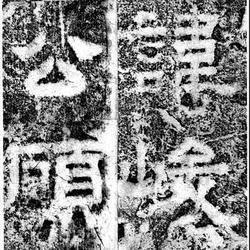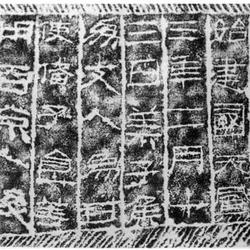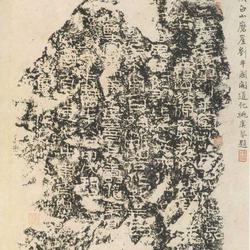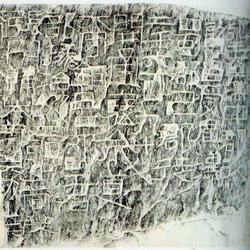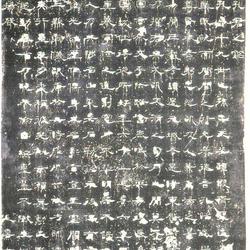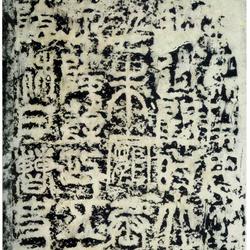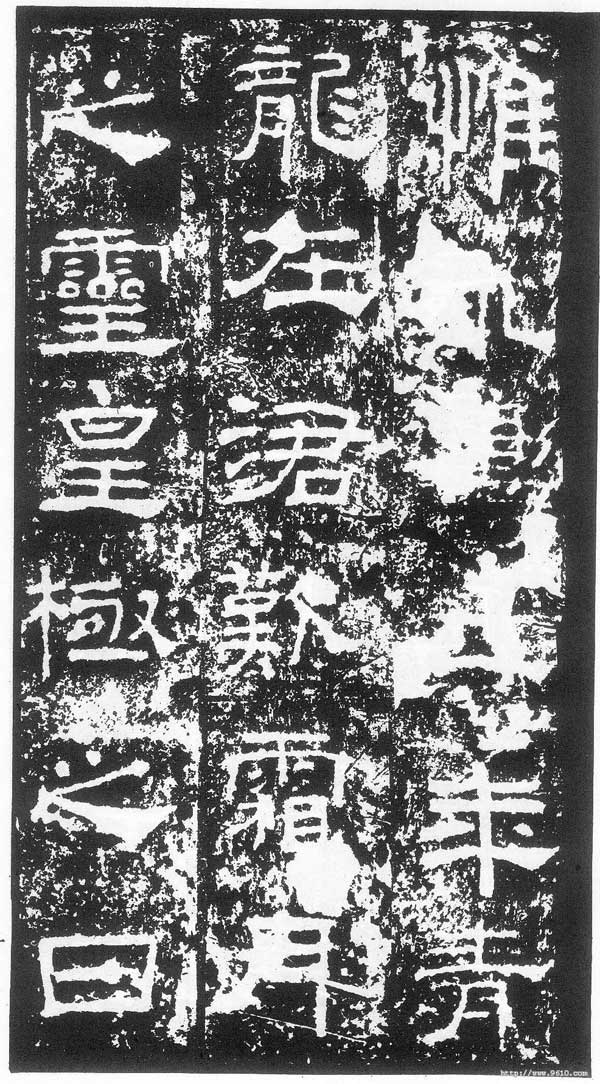
The full name is "Stele of Ceremonial Utensils Built by Han Yu, Prime Minister of Han Dynasty and Lu", also known as "Stele of Confucius Temple in Han Ming Mansion", "Stele of Confucius Temple of Han Ming Mansion", "Stele of Han Yu Fu Yan's Yaofa, Prime Minister of Lu", "Stele of Han Yu", etc. No amount. The engravings on all four sides are all in official script. The stele has sixteen lines and thirty-six characters, and nine people including Han Yuan have named it after the text. There are names on the underside of the stele and on both sides.
This stele has been the most recorded since the Song Dynasty. It is a work of high artistic quality in calligraphy. It has always been regarded as the most standard of official calligraphy. The calligraphy style is fine, vigorous and vigorous, serious and elegant, square and beautiful at the same time. Guo Zongchang of the Ming Dynasty commented on the "History of Metal and Stone": "The Han Dynasty Li should regard "The Ritual Stele of the Confucius Temple" as the first." The so-called 'stars are turning like lightning, and fibers are as fine as hair'. It is not enough to describe it. All the stele structures in the Han Dynasty can be compared with each other, but this stele is like a river in the Han Dynasty. "The Han Dynasty is the most strange in Lifa. Each stele has its own uniqueness, and there is no one like it. This stele is particularly strange. It is as thin and strong as iron, and changes like a dragon. Every word is strange, and there is no clue." He also said, "Only one is strange." "Han Yuan" is full of beauty and unprepared. It is thought to be pure but powerful, and powerful yet solemn. Since the beginning of the officialdom, there has never been such a wonderful monument." Yang Shoujing of the Qing Dynasty also said: "Han Li is like "Kai Tong Bao Bao" "Xie Dao", "Ode to the Stone Gate of Yang Jun" and the like are the winners based on temperament; "Jing Jun", "Lu Jun", "Fenglong Mountain" and the like are the winners based on the shape and quality; those who have both can only recommend this stele. To put it bluntly, it combines strangeness and danger with peace and integrity, and combines sparse beauty with strictness, so it is difficult." ("Ping Stele Record") The word mouth of this stele is complete, and the characters on the side of the stele are as sharp as new, especially elegant and colorful, stacked vertically and horizontally. Damn, even more highly praised by calligraphers. Those who attacked the Han Dynasty mostly took "Li Qi" as a model.
There are many rubbings handed down in the Ritual Vessel Stele. The Mingtuo is broken at a suitable point, not to mention writing a word, and it is extended by the foot, which is different from the word "year" on the stele.
[Exchange items]
Guo Zongchang of the Ming Dynasty: The Han Li should take "The Ritual Utensil Stele of the Confucius Temple" as the first. The beauty of his calligraphy and painting is neither the pen nor the hand. It is quaint and unparalleled. If it is a magical skill, it is not man-made. The so-called star flow, lightning, and hair transplantation are not enough to describe it. All the monuments in the Han Dynasty can be compared to each other in their structure and meaning. However, this monument is like a river in the Han Dynasty, which is beyond expectation. ("History of Epigraphy")
Wang Shu of the Qing Dynasty: The Lifa is unique in the Han Dynasty. Each stele has its own uniqueness, and there is no one the same. This stele is particularly strange. It is as thin and strong as iron, and changes like a dragon. Each word is strange and cannot be discerned. ("Inscription and Postscript of Xuzhou")
Yang Shoujing of the Qing Dynasty: To put it into perspective, it combines strangeness and danger with fairness and justice, and combines sparseness and elegance with rigor, so it is difficult. ("Ping Stele Record")

